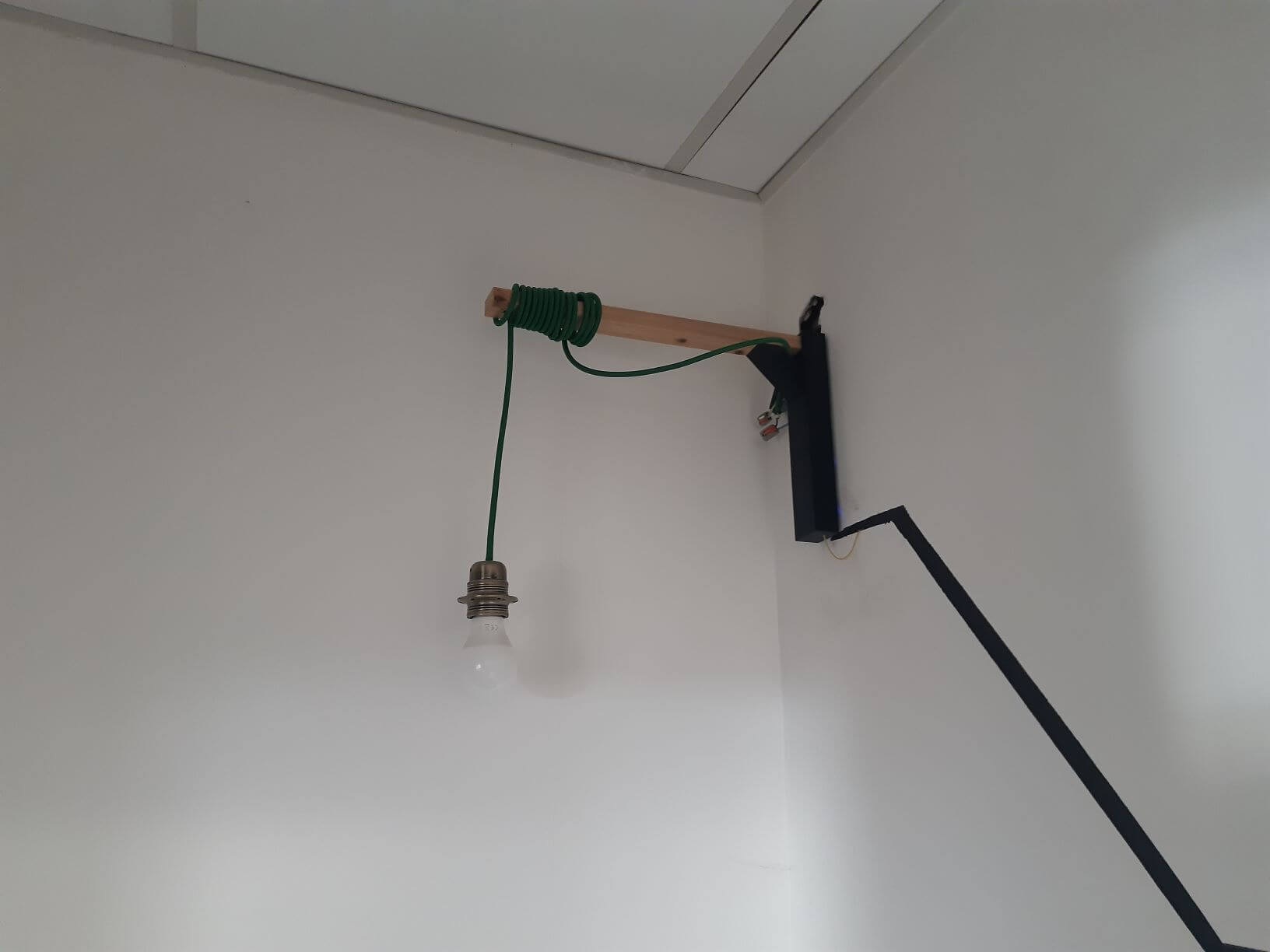One application of capacitive sensors is the creation of a tactile switch to turn on a lamp, for example. In this project, we’re going to design a capacitive sensor with Arduino that we’ll use as a tactile switch to turn a lamp on and off.
Hardware
- Arduino Nano
- 10M Ohm resistor
- Relay
- wire or conductive material
- AC converter
Wiring diagram
Warning: this project uses 220V. Take the necessary precautions to avoid electrocution.
Code
To create a capacitive sensor, we use the CapacitiveSensor library. When the capacitive sensor changes state, we modify the state sent to the relay to open or close the circuit.
#include <CapacitiveSensor.h> #define DEBUG 0 //Capacitive sensor CapacitiveSensor cs_6_2 = CapacitiveSensor(6, 2); // 10M resistor between pins 6 & 2, pin 2 is sensor pin, add a wire and or foil if desired const int sensitivity = 50; long val; //Light const int lightPin = 9; bool lightState = false; bool btnState = false, oldState = false; //smooth long smoothval, total; const int numReadings = 3; long readings[numReadings] = {0}; int readIndex; long threshVal=500; void setup() { pinMode(lightPin, OUTPUT); cs_6_2.set_CS_AutocaL_Millis(0xFFFFFFFF); // turn off autocalibrate on channel 1 - just as an example Serial.begin(9600); Serial.println("Touchless lamp initialized"); delay(2000); for (int i = 0; i < numReadings; i++) { val = cs_6_2.capacitiveSensor(sensitivity);// increase for hi smoothval = smooth(val); } } void loop() { val = cs_6_2.capacitiveSensor(sensitivity);// increase for hi smoothval = smooth(val); if (DEBUG) { //Serial.print(millis() - timeStart); // check on performance in milliseconds Serial.print("\t"); // tab character for debug window spacing Serial.print(val); // print sensor output 1 Serial.print("\t"); Serial.print(smoothval); // print sensor smooth output Serial.println(); // print sensor smooth output } // condition if (btnState == false && smoothval > threshVal) { btnState = true; } if (btnState == true && smoothval <= threshVal*0.8) { btnState = false; } if (oldState != btnState) { if (oldState == false) { lightState = !lightState; } digitalWrite(lightPin, lightState); delay(200); } oldState = btnState; delay(100); // arbitrary delay to limit data to serial port } long smooth(long val) { /* function smooth */ ////Write data on device long average; // subtract the last reading: total = total - readings[readIndex]; // read from the sensor: readings[readIndex] = val;//cs.capacitiveSensor(sensitivity); // add the reading to the total: total = total + readings[readIndex]; // advance to the next position in the array: readIndex = readIndex + 1; // if we're at the end of the array... if (readIndex >= numReadings) { // ...wrap around to the beginning: readIndex = 0; } // calculate the average: average = total / numReadings; // send it to the computer as ASCII digits return average; }
Results
When you bring your hand close to the wire that acts as a tactile switch, the lamp should turn on or off. It’s up to you to adjust the sensor sensitivity, resistance and threshVal to obtain the desired behavior.
Next steps
- Improving the robustness of capacitive sensors to external disturbances
- Add a feature to automatically switch off the lamp after a certain time

